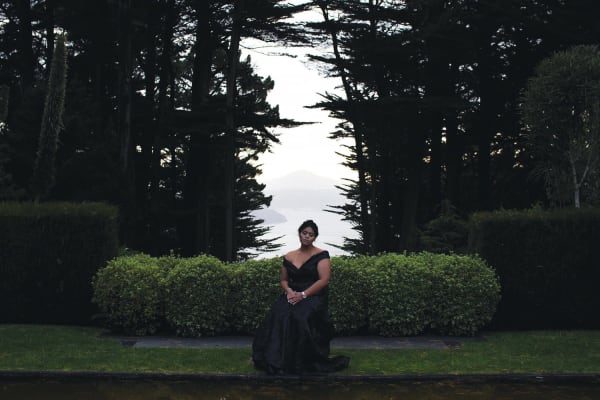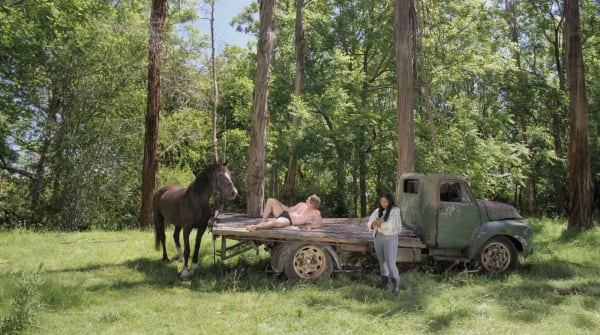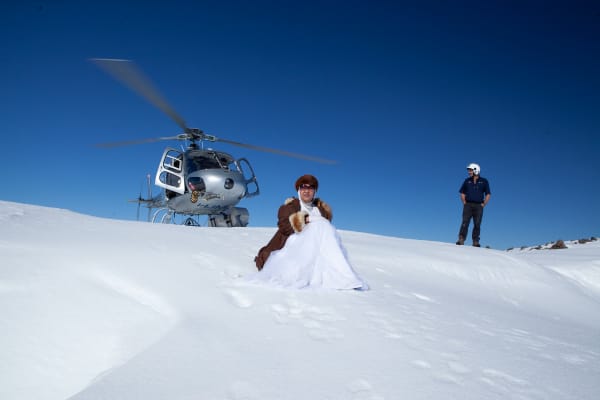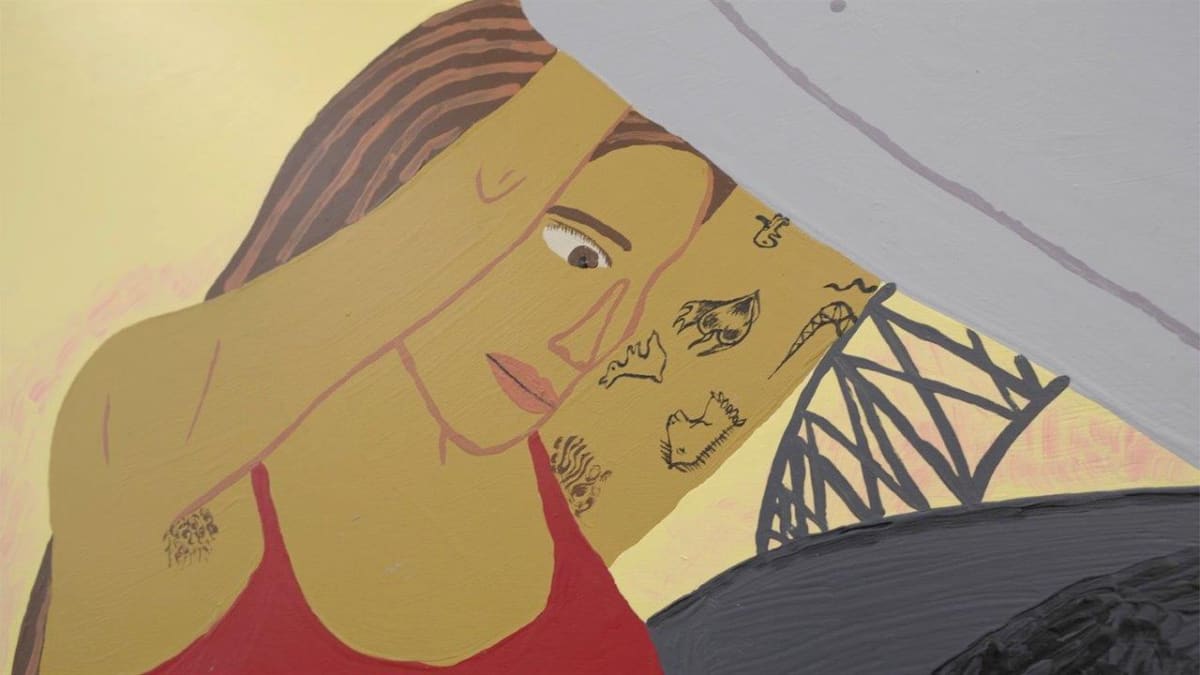Christopher Ulutupu
Christopher’s video work challenges an assumed affinity between exotic-nature and exotic-person. Vignettes or scenarios are regularly set against striking landscapes, but equally featured are highly constructed environments. With a background in film and theatre, Christopher understands the dramatic potential of scenery.
Christopher Ulutupu is a contemporary artist of Samoan, Niuean and German descent. Born in 1987, he lives in Te Whanganui-a-Tara, Wellington.
Christopher uses the conventions of cinematic storytelling to interrogate the relationships between landscape and indigenous identities. He employs a cast of actors consisting almost entirely of friends and family in his work. These actors sing, dance and perform, often hamming it up for the camera. There’s pop-culture reference abound, from girl-group renditions of Britney Spears to a loose re-enactment of an infamous drug-fuelled photoshoot for a luxury furs catalogue. However, in these references brown bodies take centre stage. The artist is as much interested here in contending with Samoan and Pacific representation as he is centring his personal relationships—in his work a singer is his sister, the keyboardist his partner, one bride is played by his mother.
Inspired early in his career by postcard imagery of Pacific Island nations marketed to early 20th Century European audiences, Christopher’s video work challenges an assumed affinity between exotic-nature and exotic-person. Vignettes or scenarios are regularly set against striking landscapes, but equally featured are highly constructed environments. With a background in film and theatre, Christopher understands the dramatic potential of scenery. One video might take place high atop the Southern Alps, while another might feature a green screen waterfall. Both tactics are part of the world-making of film, and this is part of Christopher’s skill as a storyteller. Like any good speculative fiction based beyond reality, he creates an internal logic of storytelling. It’s a logic that challenges assumptions placed on brown bodies and seeks to imagine new alternatives for contemporary indigeneity.
-

Christopher Ulutupu, Manino
29 Aug - 21 Sep 2024Jhana Millers Gallery is pleased to present Manino by Christopher Ulutupu.Read more -

Editions
9 May - 1 Jun 2024Jhana Millers is pleased to present their first print exhibition featuring a group of represented artists.Read more -

Summer Selection
25 Jan - 11 Feb 2023Jhana Millers reopens for 2023 with a selection of works by gallery artists.Read more -

Christopher Ulutupu, What’s the worst you could do?
23 Jun - 16 Jul 2022What’s the worst you could do? From early on, Christopher Ulutupu’s practice has used the conventions of cinematic storytelling to interrogate the relationship between place and indigenous identities. He employs...Read more -

Self by Others, Ayesha Green, Elisabeth Pointon, Christopher Ulutupu, Claudia Kogachi, Caitlin Devoy, Robbie Handcock
1 - 18 Dec 2021Group Exhibition, Self by Others. Exhibition at Jhana Millers Gallery, Te Whanganui-a-Tara, Wellington, Aotearoa New ZealandRead more -

Group Exhibition, THE BIG THREE
9 - 31 Jul 2021Group Exhibition, THE BIG THREE. Exhibition at Jhana Millers Gallery, Te Whanganui-a-Tara, Wellington, Aotearoa New ZealandRead more -

Christopher Ulutupu, Be Happy // Be Still
25 Oct - 10 Nov 2019Christopher Ulutupu, Be Happy // Be Still. Exhibition at Jhana Millers Gallery, Te Whanganui-a-Tara, Wellington, Aotearoa New Zealand.Read more
-

Group Exhibition, ONE
15 - 27 Jul 2019Group exhibition, ONE. Exhibition at Jhana Millers Gallery, Te Whanganui-a-Tara, Wellington, Aotearoa New ZealandRead more
-

The Gates, Inaugural Exhibition
7 Jul - 4 Aug 2018Group Exhibition, The Gates. Exhibition at Jhana Millers Gallery, Te Whanganui-a-Tara, Wellington, Aotearoa New ZealandRead more
-
Te Hīkoi Toi: The loop of the moving image
Thomasin Sleigh, Stuff, July 9, 2022 -
Artists share central Wellington loft flat with a creative kaupapa
Joanna Davis, Stuff, January 23, 2022 -
Island Queerness in the Diaspora: Sione Monū and Christopher Ulutupu in Conversation with Robbie Handcock
The Art Paper, August 17, 2021 -
Video artist Christopher Ulutupu
Radio New Zealand, July 4, 2021 -
Over the Radar Christopher Ulutupu: Fantasy, Desire, and Indigeneity
Will Furtado, Contemporary and, April 30, 2021 -
Phone Tag: Interview with Chris Ulutupu
Linnea West, February 20, 2019 -
Tulisi by Christopher Ulutupu
Curated by David Broker, ANU School of Art & Design Gallery, June 7, 2018 -
In Whose Eyes?
Jessica Hubbard, EyeContact, February 27, 2018 -
The Unmissables: Four Exhibitions to see in February
The Pantograph Punch, February 2, 2018 -
Christopher Ulutupu: The Romantic Picturesque
Thomas Capogreco, Fine Print, December 1, 2017






























